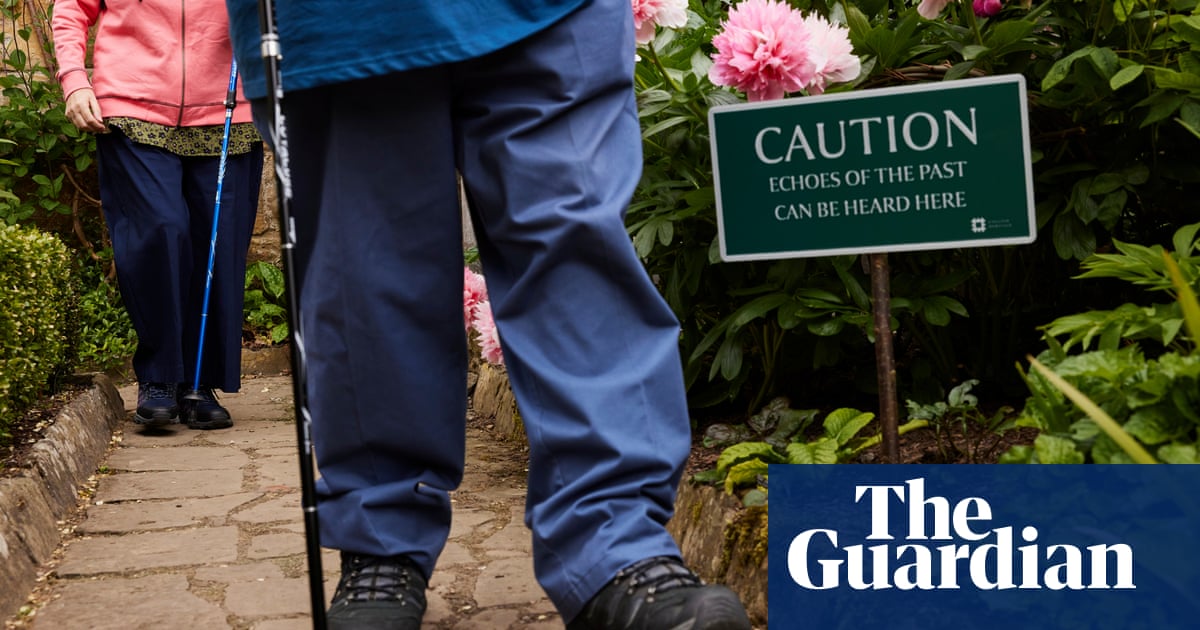
Fifty years ago, heritage sites in England were covered in signs saying don’t do this, don’t do that, beware coming closer, danger here, keep your children under control and the dreaded we will prosecute you.
Those doom-laden Ministry of Works signs are making a comeback. Or a sort of comeback, as English Heritage announces plans for new signs that will have a more mindful spin.
Instead of “Beware open medieval culverts”, visitors might see a sign saying “Beware, this view will live long in the memory”.
The idea is to encourage visitors to explore sites with their five senses. That could be listening to the crunch of the gravel at Down House, the same sound Charles Darwin heard on his daily thinking walks. Or feeling the Northumberland wind pummelling your face on Hadrian’s Wall, as it would have for a Roman sentry 2,000 years ago.
“It is a bit of a cliche but we do want people to get off their phones,” said Samantha Stones, a senior properties curator for English Heritage. “The signs are an encouragement for people to take a moment. Why not take your shoes off, feel the grass on your feet? Listen to the sounds of the birds singing. Smell the gorgeous Victorian garden around you.
“It doesn’t have to be calm engagement … you could take your shoes off and run around on the grass. We’re trying to evoke the same experiences some of the people who were there in the past would have had.”
The Ministry of Works signs, which have their own appreciation society, can still be found at heritage sites but not in the numbers they once were.
“A lot of things tended to be forbidden, such as climbing,” Stones said. “We wanted to take that Ministry of Works signage and have a playful interpretation to encourage our visitors to connect more deeply with the properties and the past.”
At Mount Grace Priory, just off the busy A19 road in North Yorkshire, the site manager David Hannah thinks the signs are a great idea, although the terrible phone signal helps to keep people off their devices in any event. “It’s fabulous, it adds to the peace and tranquility,” he said.
Mount Grace is home to the best-preserved Carthusian priory in England, where hermitic monks spent their days praying and working alone in silence. People today come to take in the scenery but all the senses can be stimulated, Hannah said.
Mount Grace’s “Beware, this view will live long in the memory” sign is well placed, pointing out a view up to the site’s manor house through the Chris Beardshaw-designed garden, a joyful blaze of pulmonaria, Brunnera macrophylla, Primula beesiana, ferns, hostas, foxgloves and acers up to a border of peonies and irises.
“It is quite something, isn’t it?” Hannah said. “It is a view that everyone wants to take a photograph of … really, very special.”
Elsewhere, visitors are invited to walk barefoot over a lawn or smell fragrant roses that even in early June are looking bewilderingly beautiful.
In addition to the signs at properties, English Heritage has created on its website a “50 ways to explore using your senses” list. It includes:
Sniffing out the animals at some sites, such as the donkeys at Carisbrooke Castle, the horses at Audley End and the Tamworth pigs at Boscobel House.
Listening to the sounds of water in gardens, including one of the grandest fountains in Europe, the spectacular Perseus and Andromeda fountain at Witley Court.
Feeling the cold of seawater by paddling or swimming as Queen Victoria and her family did at Osborne beach.
Taste produce still grown in kitchen gardens, including asparagus, strawberries and potatoes.
Look through the same windows at the same views that figures including Charles Darwin, the Duke of Wellington, Queen Victoria and Charles I did.
The signs are in place until the end of July and are no more than suggestions, Stones said. “We’re suggesting that people might want to engage a little more and perhaps have a deeper connection with the past,” she said. “It’s not just about reading information on a panel or looking on your phone. This is different, we want people to have a sensory experience.”












